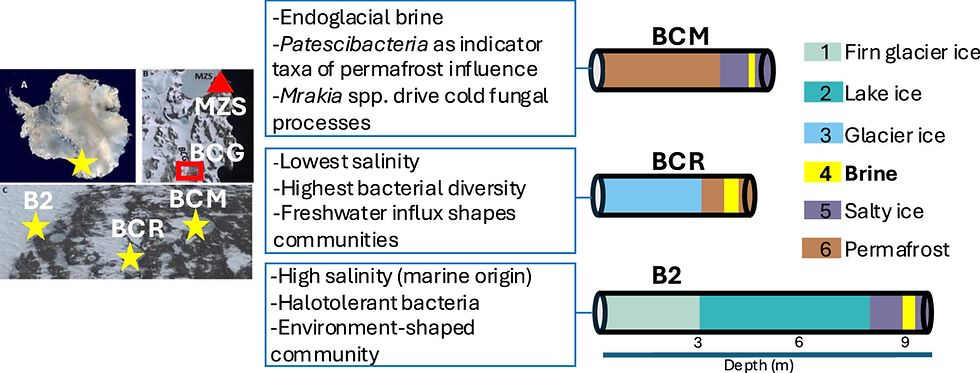Humans tamed the microbes behind cheese, soy, and more
- David Ojcius
- Jun 30, 2022
- 4 min read
The genomes of bacteria and fungi used in food production bear the signs of domestication also seen in crops and livestock
The burst of flavor from summer’s first sweet corn and the proud stance of a show dog both testify to the power of domestication. But so does the microbial alchemy that turns milk into cheese, grain into bread, and soy into miso. Like the ancestors of the corn and the dog, the fungi and bacteria that drive these transformations were modified for human use. And their genomes have acquired many of the classic signatures of domestication, researchers reported in two talks this month at a meeting in Washington, D.C.
Microbes can’t be “bred” in the normal sense, because unlike peas or pigs, individual microbes with desired traits can’t be chosen and mated. But humans can grow microbes and select variants that best serve our purposes. The studies show the process, repeated over thousands of years, has left genetic hallmarks similar to those in domesticated plants and animals: The microbes have lost genes, evolved into new species or strains, and become unable to thrive in the wild.
The studies “are getting to the mechanisms” of how microbial domestication works, says Benjamin Wolfe, a microbiologist at Tufts University. By revealing which genes are key to microbes’ prized traits—and which can be lost—the work could help further improve the organisms that fashion much of our food and drink, “especially [with] increasing interest in fermented foods,” says microbial ecologist Ariane Peralta of East Carolina University.
The yeasts used in making bread have long been seen as domesticated because they have lost genetic variation and can’t live in the wild. But for other microbes, scientists have been “lacking clear evidence of domestication … in part because [their] microbial communities can be hard to study,” says graduate student Vincent Somerville of the University of Lausanne.
Somerville and John Gibbons, a genomicist at the University of Massachusetts, Amherst, independently focused on food fermentation, which helped early farmers and herders transform fresh produce and milk into products that can last months or years. Gibbons took a close look at the genome of Aspergillus oryzae, the fungus that jump-starts production of sake from rice and soy sauce and miso from soybeans.
When farmers cultivate A. oryzae, the fungus—a eukaryote, with its DNA enclosed in a nucleus—reproduces on its own. But when humans take a little finished sake and transfer it to a rice mash to begin fermentation anew, they also transfer cells of the fungal strains that evolved and survived best during the first round of fermentation.
Gibbons compared the genomes of scores of A. oryzae strains with those of their wild ancestor, A. flavus. Over time, he found, selection by humans had boosted A. oryzae’s ability to break down starches and to tolerate the alcohol produced by fermentation. “The restructuring of metabolism appears to be a hallmark of domestication in fungi,” he reported last week at Microbe 2022, the annual meeting of the American Society for Microbiology. For example, domesticated Aspergillus strains may have up to five times more copies of a gene for metabolizing starches as their ancestor—“a brilliant way for evolution to turn up this enzyme,” Wolfe says.
The genes of domesticated A. oryzae also display little variation, and the genome has lost some key genes, including those for toxins that would kill the yeast needed to complete fermentation—and which can make humans sick. Domestication has apparently made A.oryzae more human friendly, just as it bred bitter flavors out of many food plants.
Somerville reported at the meeting that he has seen much the same pattern in prokaryotes, or organisms without nuclei, including in bacteria used to make cheese. Early cheesemakers established “starter” bacterial cultures, which people in Switzerland use to make Gruyère and other cheeses. Since the 1970s, cheesemakers have banked samples of their starter cultures to evaluate their cheese and keep quality high. Somerville sequenced the genomes of more than 100 samples.
“The exciting thing from this work was having samples over time,” Wolfe says. “You can see the shaping of diversity,” with changes in the past 50 years hinting at the trajectory of change over past centuries.
All the samples had low genetic diversity, with just a few strains of two dominant species, Somerville reported. Those few persistent strains are probably important to cheese quality, Gibbons said. The cultures had also lost genes since the 1970s, including some needed to make certain amino acids, which are required to assemble proteins. But amino acids are costly to make—and these microbes live in protein-rich milk. “They were able to let go of a bunch of genes they didn’t need,” Wolfe says. Somerville also found extensive gene swapping among the microbes, one way to acquire new genes.
Putting the studies together, Gibbons concludes the genomes of “domesticated prokaryotes and microbial eukaryotes are very similar” to each other and to multicellular domesticated organisms. Peralta cautions that the analogy to crops and animals isn’t perfect. Microbes can evolve far more quickly and so can more easily be “rewilded.” Still, as researchers fine-tune domesticated microbes, she hopes for even better tasting sake and cheese.
Read more at:
https://www.science.org/content/article/humans-tamed-microbes-behind-cheese-soy-and-more








Comments